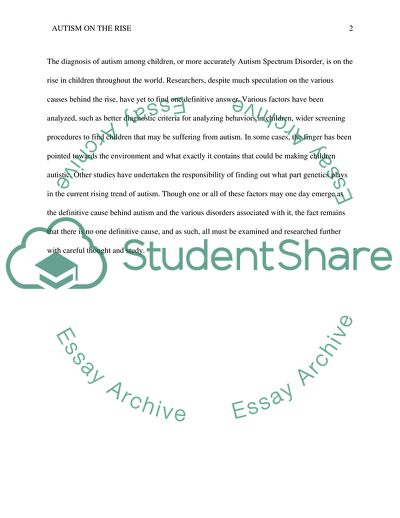Cite this document
(Autism on the Rise: Many Speculation with No Definitive Answers Coursework - 1, n.d.)
Autism on the Rise: Many Speculation with No Definitive Answers Coursework - 1. https://studentshare.org/health-sciences-medicine/1775073-why-is-the-number-of-autistic-children-steadily-rising
Autism on the Rise: Many Speculation with No Definitive Answers Coursework - 1. https://studentshare.org/health-sciences-medicine/1775073-why-is-the-number-of-autistic-children-steadily-rising
(Autism on the Rise: Many Speculation With No Definitive Answers Coursework - 1)
Autism on the Rise: Many Speculation With No Definitive Answers Coursework - 1. https://studentshare.org/health-sciences-medicine/1775073-why-is-the-number-of-autistic-children-steadily-rising.
Autism on the Rise: Many Speculation With No Definitive Answers Coursework - 1. https://studentshare.org/health-sciences-medicine/1775073-why-is-the-number-of-autistic-children-steadily-rising.
“Autism on the Rise: Many Speculation With No Definitive Answers Coursework - 1”. https://studentshare.org/health-sciences-medicine/1775073-why-is-the-number-of-autistic-children-steadily-rising.


